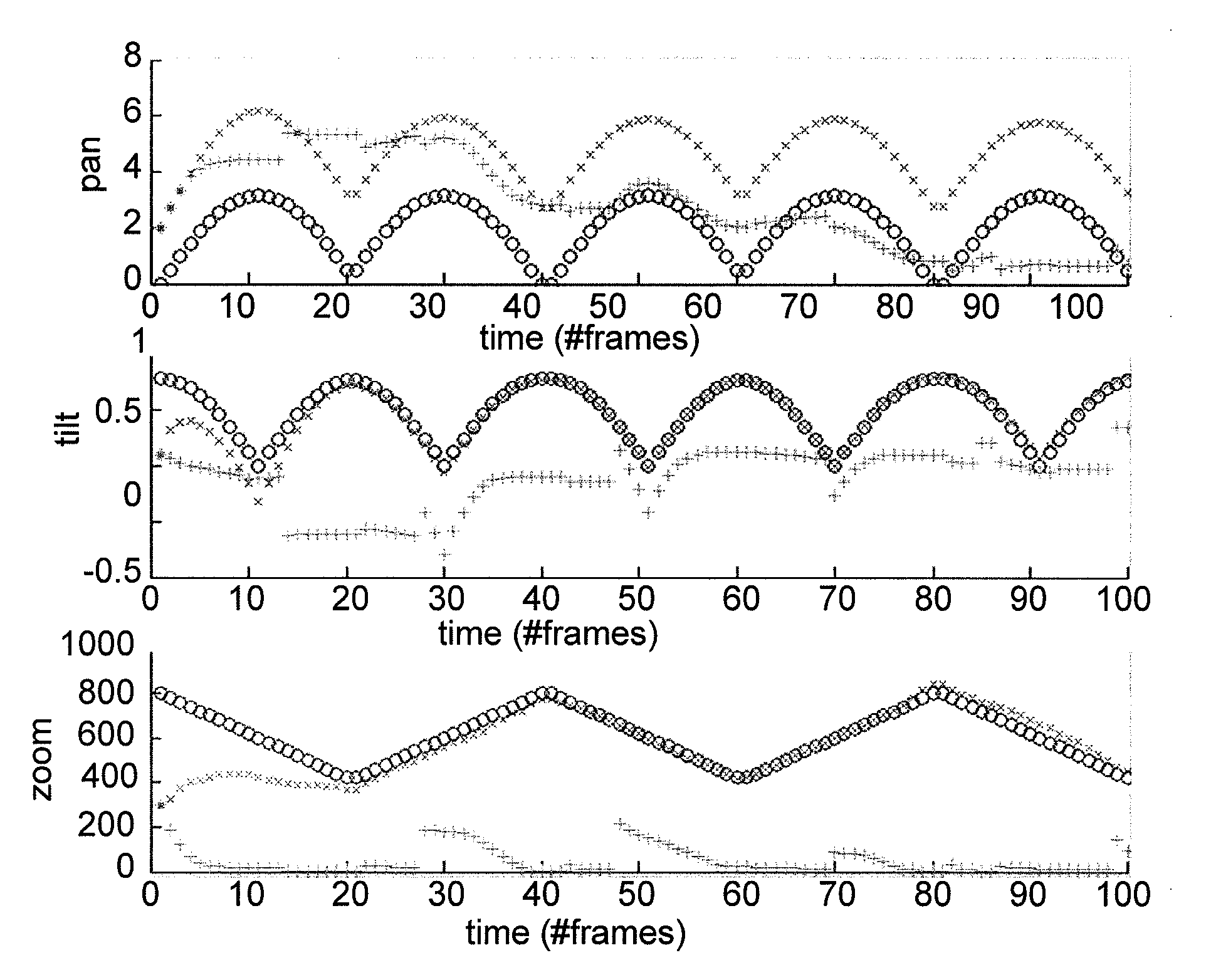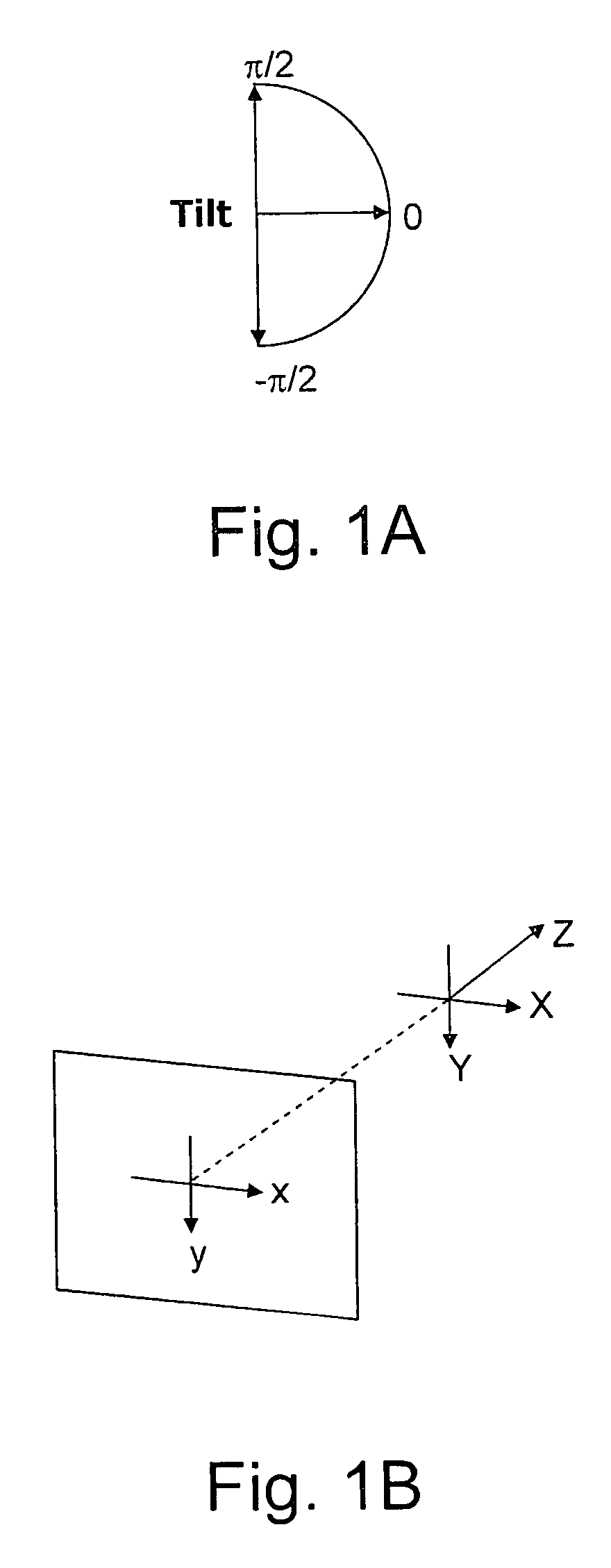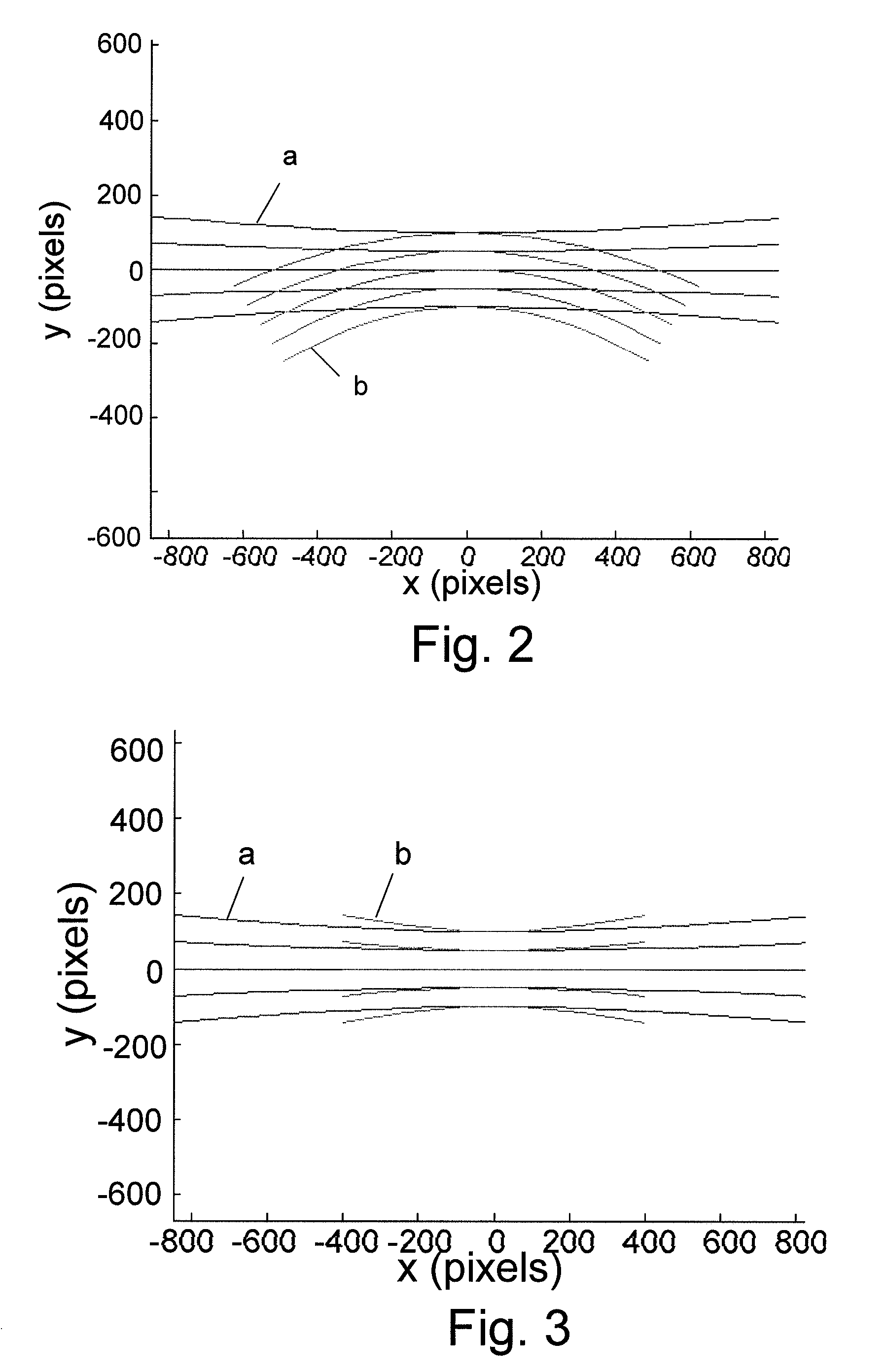Method for estimating the pose of a ptz camera
a ptz camera and pose estimation technology, applied in the field of video surveillance, can solve the problems of inherently large error in the image motion estimation algorithm, large error in the pose estimation algorithm, and large error in the previous iteration
- Summary
- Abstract
- Description
- Claims
- Application Information
AI Technical Summary
Benefits of technology
Problems solved by technology
Method used
Image
Examples
Embodiment Construction
[0038]The first steps of the method of the invention are similar to those used in the art for determining the pose of a PTZ camera. Reference points are selected in the first (reference) frame and located in the second (current) frame. A matrix is then determined that explains the motion of the reference points from the first to the second frame. This matrix has two deficiencies. Firstly it is influenced by “noise” caused by the difficulty of exactly identifying the location of the reference points in the neighboring frames and secondly not all 3×3 matrices describe “legal” motions of the camera. As a result, when this matrix is used in the prior art to determine the pose of the camera in the 2nd frame, an error occurs and these errors accumulate as the calculated pose of the 2nd frame is used as the basis of the calculation of the pose of the 3rd frame, etc.
[0039]The method of the invention now deviates from the prior art by determining a legal matrix, which contains the combinatio...
PUM
 Login to View More
Login to View More Abstract
Description
Claims
Application Information
 Login to View More
Login to View More - R&D
- Intellectual Property
- Life Sciences
- Materials
- Tech Scout
- Unparalleled Data Quality
- Higher Quality Content
- 60% Fewer Hallucinations
Browse by: Latest US Patents, China's latest patents, Technical Efficacy Thesaurus, Application Domain, Technology Topic, Popular Technical Reports.
© 2025 PatSnap. All rights reserved.Legal|Privacy policy|Modern Slavery Act Transparency Statement|Sitemap|About US| Contact US: help@patsnap.com



